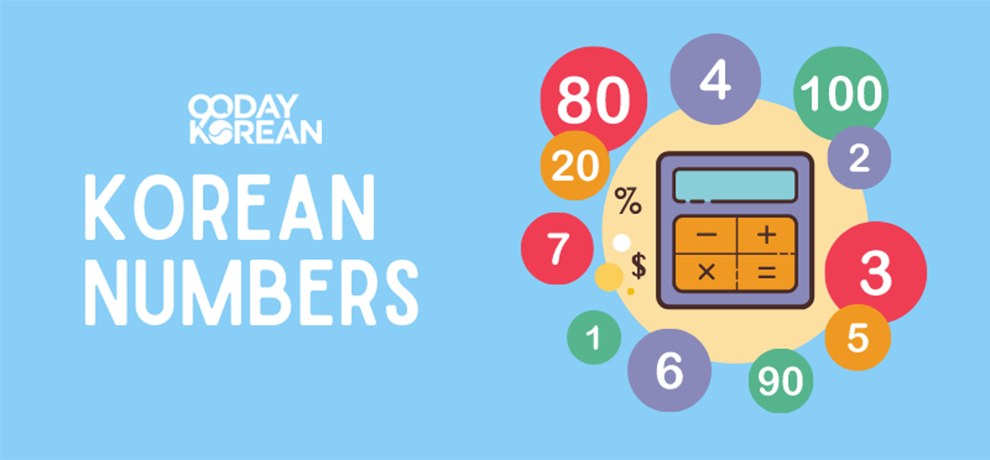Using visual aid is the easiest way to memorize Korean numbers correctly. You can also keep in mind their English equivalents to recollect better.
Source: 90daykorean.com
Learning a new language can be challenging and fun at the same time. Counting is one of the most important skills for communicating in any language.
As a language learner, it’s important to know how to count in the language you’re studying, especially if you want to talk to native speakers.
In this blog post, we’ll talk about the basics of Korean numbers and give you some tips on how to count easily in Korean.
The Basics of Korean Numbers
There are two parts to the Korean number system:
- The native Korean number system
- The Sino-Korean number system
The native Korean system counts things like age, time, and dates. On the other hand, the Sino-Korean system is used to count money, phone numbers, and other things.
Chinese characters make the Sino-Korean numbers, while Korean words make the native Korean numbers.
Tips For Memorizing Korean Numbers
Using mnemonics and visual aids is one of the best ways to learn Korean numbers. For instance, you can link a Korean word for a number to a picture that shows that number.
This can make the numbers easier to remember. Putting Korean numbers with their English equivalents is another useful trick. For example, the Korean number “sip” (4) can be thought of as “four” in English.
This can help you make connections between the two languages and make it easier to recollect the Korean numbers. Last but not least, repeating Korean numbers out loud can also help you memorize them.
Tricks For Pronouncing Korean Numbers
The Korean language has a lot of different sounds that can be hard for English speakers to learn.
When counting in Korean, paying attention to how the numbers are said is important to ensure you’re doing it right. Some common sounds to watch out for are the “ah” sound in the number “ah-hahm” (10) and the “yut” sound in the number “yut-sip” (14).
If you practice these sounds often, you can feel more confident about how you say the numbers.
3 Common Mistakes to Avoid in Learning Korean Numbers
When learning to count in Korean, it’s important to be aware of common errors that can trip you up. Here are three of the most common mistakes to avoid in learning Korean numbers:
1. Confusing the two Korean number systems
Using the wrong way to count is one of the most common mistakes. Always remember the difference between the native Korean number system and the Sino-Korean number system and when to use what.
As we have discussed, the native Korean system is used to count things like age, time, and dates. The Sino-Korean system is based on Chinese characters and is used to count money, phone numbers, and other things.
Knowing when to use each numbering system and practicing using them in the right situations is important.
2. Mispronouncing the numbers
Another common mistake is mispronouncing Korean numbers. This can make it hard to understand and talk to each other.
To avoid this, you should practice saying the numbers correctly, paying close attention to sounds specific to the Korean language.
3. Forgetting to use Korean counters
In Korean, certain words are used as counters to indicate the type of item counted. For example, the counter for animals is “geol,” and the counter for flowers is “hana.”
Neglecting to use these counters can result in incorrect usage of the numbers. To avoid this mistake, you should learn and practice using Korean counters correctly.
By not making these common mistakes, you’ll be well on your way to being able to count easily in Korean and talk with native speakers well.
Advanced Counting Techniques
Once you know how to count from 1 to 10 in Korean, you can learn more advanced ways to count. This includes counting numbers like “baek-man” (100,000) and “cheon-man” (200,000). (1,000,000).
You can also count the number of people in a group or items in a store to get more practice with numbers. With practice, you’ll be able to count in Korean like a native, and you’ll be able to talk to native speakers better.
Wrap Up
In conclusion, learning to count in Korean is an important part of learning the language. Anyone can learn to count easily if they know the right tips and tricks.
If you find learning Korean numbers hard, 90 Day Korean can help. Their full program gives you expert advice and proven methods that will help you learn Korean numbers quickly.
The fact that 90 Day Korean focuses on real-world language skills is one of its best parts. They explain the Korean number system clearly and concisely and give tips on remembering and saying the numbers correctly. Their method is effective and efficient, so you can learn Korean numbers quickly and feel comfortable with them.
Don’t let the fact that you don’t speak Korean stop you from seeing everything the country offers. Join the thousands of happy people who have learned Korean successfully with 90-Day Korean. Sign up now, and you can start learning Korean right away.





